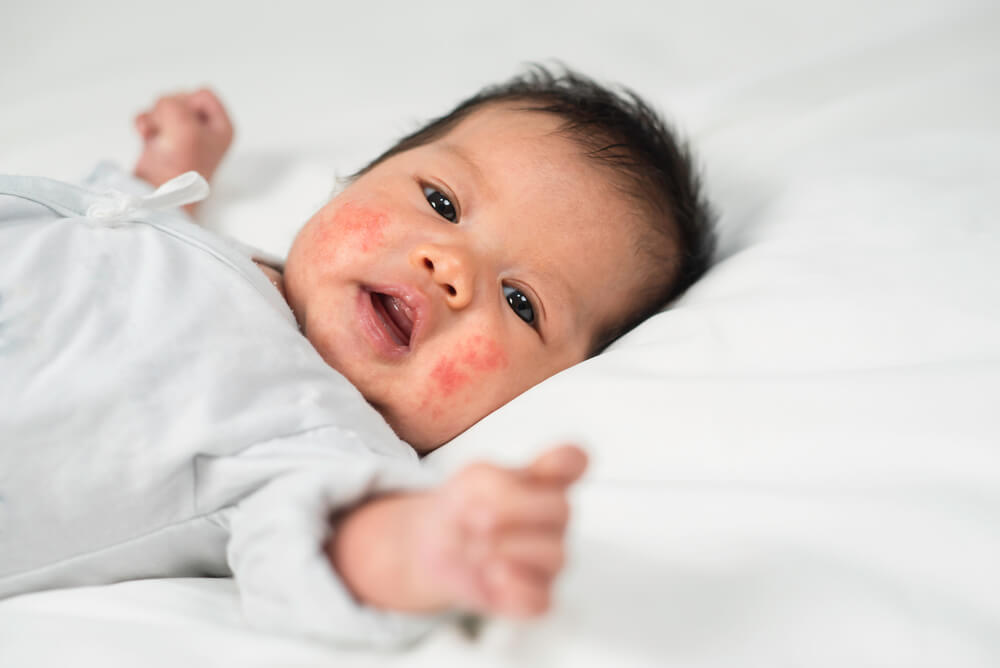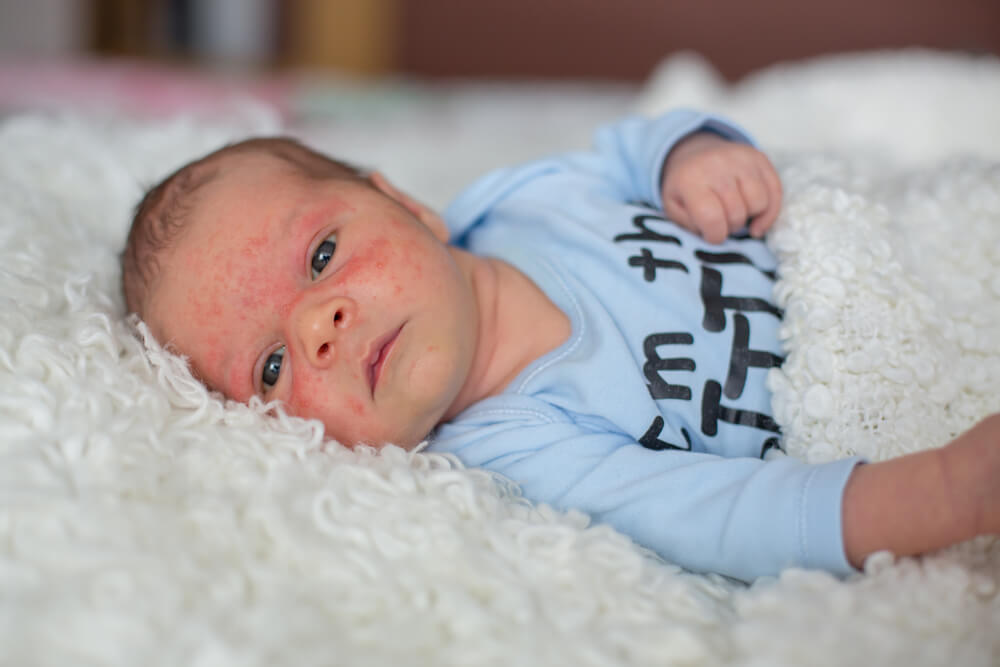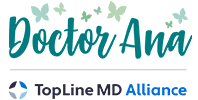Baby acne vs. eczema — what is the difference, and how can you tell which is which? In reality, minor skin problems and rashes are common in infants and babies. While most of these skin-related complications go away without expert help, some may linger and become concerning. Since infant acne can resemble eczema, many parents may confuse one for the other. If you are looking for ways to tell these two skin conditions apart, this article is right for you. Of course, we always recommend seeking out the help of an expert such as Doctor Ana for professional evaluation and treatment.
In this article on baby acne vs. eczema, you will learn about both of these skin conditions, the differences, possible treatments, and other diagnoses.
If this sounds good to you, keep on reading.
What are Acne and Eczema?
Before explaining the differences between baby acne vs. eczema, let us briefly explain what acne and eczema refer to. In short, acne is a common inflammatory disorder linked to the oil glands connected to the hair follicles in your skin. On the other hand, eczema (or dermatitis) is a condition that results in dry, itchy, and flaky skin. There are different types of eczema, including nummular eczema, neurodermatitis, seborrheic dermatitis, stasis dermatitis, atopic dermatitis, contact dermatitis, and dyshidrotic eczema.
The good news is that both newborn acne and eczema can be treated. Although uncomfortable, the symptoms are typically temporary.
What is Baby Acne?

Neonatal acne or “baby acne” is a skin condition that affects approximately two in ten newborn babies. Usually, this skin condition will resolve without professional treatment after a few weeks, up to a couple of months. Acne usually develops around two weeks of age, but sometimes it can happen any time before six weeks. Sometimes, the child may have acne from birth, and this is referred to as “newborn acne.”
If the baby develops acne after six weeks of age, caregivers and parents are recommended to take the child to a healthcare professional. At this stage, the skin condition is classified as “infantile acne.”
This type of acne rarely occurs, affecting around two in 100 children. Typically, infantile acne can last for between six months and a full year. In some cases, infantile acne persists until the adolescent years.
Experts are not sure what causes baby or newborn acne. However, some of the possible reasons include:
- Overactive oil glands
- Hormones such as testosterone
Symptoms of Baby and Infant Acne
The symptoms of neonatal acne are close to those of adult acne. This skin condition refers to typical breakouts of pimples and spots that appear on the back, chest, neck, and face. Sometimes, children can experience symptoms that indicate hormonal issues like abnormal hair growth. If you notice concerning signs, talk to a healthcare professional immediately.
What is Baby’s Eczema?
Eczema includes a group of skin conditions that cause inflamed and red areas of the skin. Usually, these inflamed areas feel itchy and flaky. In most cases, a baby’s eczema develops between the ages of six months and five years.
Some of the eczema types common in babies include:
- Contact dermatitis
- Cradle cap or seborrheic dermatitis
- Atopic dermatitis
- Dyshidrotic eczema
In the United States, over 30 million individuals deal with eczema. When it comes to children, the most widespread type of eczema is atopic dermatitis, affecting about 10 million kids. According to the statistics, children of African American heritage tend to display more severe symptoms of these skin conditions.
Nevertheless, around eight in 10 children will outgrow eczema by the time they reach adolescents.
Symptoms of Baby’s Eczema
Some of the most common symptoms of this skin condition include:
- Dark skin patches
- Scaly or rough skin
- Oozing or crusty skin
- Itchy and dry skin
- Swollen skin areas
- Inflamed or red patches of skin
Baby Eczema vs. Acne: How to Tell Them Apart
Even though eczema and baby acne look pretty similar, the treatment methods are different. That is why it is crucial to understand the differences between the two. Of course, consult with a healthcare professional first for the most accurate diagnosis and best treatment for your child.
Baby Acne vs. Eczema: General Differences
Neonatal acne usually develops in the initial six weeks of a baby’s life. On the other hand, infantile acne will usually develop between the ages of three and six months. This skin condition usually presents as red spots or pimples. Infantile acne may also include whiteheads and blackheads, as well as spots and pimples. Sometimes, infant acne also includes cysts.
On the flip side, eczema may appear between the age of six months and five years. In many cases, individuals mistake eczema for a skin rash. If the baby is under six months, eczema will typically look “weepy” and red. If the skin condition gets infected, you may also notice small lumps containing pus and yellow crust develop on the skin.
Affected Body Areas
Even though there is some overlap, acne and eczema may affect different body parts.
Infant and baby acne can occur on the following:
- Scalp
- Neck
- Cheeks
- Forehead
- Upper chest
- Upper back
- Scalp
In the initial six months of life, a baby’s eczema will typically appear on the:
- Cheeks
- Forehead
- Scalp
- Face
- Chin
Often, eczema can develop on the child’s knees and elbows between six and twelve months of age. In rare cases, the skin condition can spread to other body parts (except for the diaper area). If you notice skin changes in the diaper area, you may be dealing with a diaper rash.
Possible Treatments and Home Remedies
Baby eczema vs. acne can be concerning, but luckily, there are some steps you can take to heal your child’s skin. Receiving a proper diagnosis is the first step to healing. Depending on your child’s skin condition, they may require a different treatment method.
Baby or Infant Acne Treatment Methods
If your child is dealing with acne, make sure to refrain from:
- Using acne washes and harsh treatments (unless recommended by the doctor)
- Using hot water (instead, use lukewarm water)
- Using greasy or oily skin care products
- Scrubbing or rubbing the inflamed areas
In most cases, infant acne should clear up on its own. Otherwise, your doctor can prescribe antibiotic gels or creams.
Treatments for Baby’s Eczema
Your healthcare provider may suggest moisturizers to relieve itchiness and flaky skin. Most importantly, you will need to identify the triggers of eczema and avoid exposure.
FAQ

What does healing look like in baby eczema vs. acne?
As your baby’s skin heals, you will notice fewer spots and pimples. As for eczema, the scaling and dryness will begin to improve, and the redness will begin to fade.
Is a rash on the head or on the ears acne or eczema?
Both eczema and acne can develop on the scalp and the forehead. Also, both skin conditions may form on or behind your baby’s ear.
What are milk spots?
Milk spots or milia are small cysts under your baby’s skin that contain keratin. About 40 to 50 percent of newborns have milk spots. Although they may look like eczema or acne, they are unrelated.
When should I consider professional help?
If you have any questions or concerns related to your baby’s health and well-being, consult a professional.
Are you looking for the best experts and the safest clinic? We are here to help. Book an appointment today to get started.




